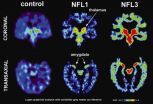FARMINGDALE, NY, January 23, 2013 (Press-News.org) MaxiAids Products for Independent Living (www.MaxiAids.com) has released their 2013/14 Catalog. Commonly accepted as the 'Reference Guide of the Industry,' the MaxiAids Catalog contains the largest available assortment of items that support active, healthy and independent lives.
The most viewed catalog in the industry, it has thousands of budget-friendly assistive items for all age groups, no matter what their special need is. See more clearly with magnified, talking or large print daily living items such as talking watches and large numbered clocks! Never oversleep with reliable vibrating alarm clocks... and hear more clearly with amplified telephones and personal amplifiers! Perform daily chores with ease using specially designed cooking helpers and dressing aids!
Feel the therapeutic comfort of pillows, cushions and supports and enjoy greater mobility with a huge selection of canes, walkers and even seats that lift you to a standing position. Hundreds of home safety, healthcare and medication aids including bath benches, safety rails/bars and diabetic aids help you take care of yourself and make taking medicine doses a whole lot easier!
To accommodate this vast range of items, this year's catalog has been redesigned to provide fast, easy browsing and a better shopping experience.
"MaxiAids now carries over 8,000 products designed to make people's lives easier and more productive," notes Executive Director of Operations Larry DiBlasi. "With so many items in stock, we want to be sure our customers can quickly and easily find what they are looking for.
Mr. DiBlasi says that very often customers looking for a specific item are amazed to discover how many different, helpful items MaxiAids has in stock. Now customers will find it easier than ever to find and buy all these items that they never even knew existed.
Also for this year's catalog, MaxiAids has introduced a new pricing structure, lowering their already industry-leading prices even further. Hundreds of items throughout the 2013/14 catalog are marked with a special "New Low Price" symbol to reflect these cost savings.
"As people struggle in the current economy, it's important that we continue to provide the best value," says company founder and President Elliot Zaretsky. "Whether they are buying on behalf of a school district, a government agency, or for themselves or a loved one - we want our customers to know that MaxiAids offers the best service and the lowest prices... period."
MaxiAids is currently in their 27th year proudly serving the needs of our seniors, veterans, the blind, visually impaired, deaf, hard of hearing, arthritic, diabetic and those with mobility challenges and other special needs. The MaxiAids 2013/14 Catalog is packed with thousands of helpful products designed to help individuals live more active, healthy and independent lives. For more information, visit www.MaxiAids.com or call 1-800-522-6294.
Products That Make a Difference: Discover MaxiAids' 2013/14 Catalog
MaxiAids Products for Independent Living has released their 2013/14 catalog featuring thousands of helpful items and new low prices. Considered by many the 'Reference Guide of the Industry', it has also been re-designed for faster, easier navigation.
2013-01-23
ELSE PRESS RELEASES FROM THIS DATE:
Lower drinking ages can have an impact on later drinking patterns
2013-01-23
Lower minimum legal drinking age (MLDA) laws have been associated with short-term effects such as a greater number of traffic fatalities and teen suicides. A new study has investigated the long-term and persistent linkages between permissive MLDA laws and specific drinking behaviors such as average alcohol consumption, frequency of drinking, patterns of binge drinking, and moderate drinking. Findings support an association with problematic drinking behaviors that persist into later adulthood, such as more frequent binge episodes.
Results will be published in the March ...
Binge drinking can dramatically amplify damage to the liver
2013-01-23
Alcoholic liver disease (ALD) is characterized by a fatty liver, hepatitis, fibrosis, and cirrhosis. Binge drinking is on the rise worldwide, and is particularly common in the U.S. A review of studies addressing the effects of binge drinking on the liver underscores the complex interactions among various immune, signaling pathways, epigenetic, and metabolic responses of the liver to binge drinking.
Results will be published in the April 2013 issue of Alcoholism: Clinical & Experimental Research and are currently available at Early View.
"The liver is the main metabolic ...
Reviewing alcohol's effects on normal sleep
2013-01-23
Sleep is supported by natural cycles of activity in the brain and consists of two basic states: rapid eye movement (REM) sleep and non-rapid eye movement (NREM) sleep. Typically, people begin the sleep cycle with NREM sleep followed by a very short period of REM sleep, then continue with more NREM sleep and more REM sleep, this 90 minute cycle continuing through the night. A review of all known scientific studies on the impact of drinking on nocturnal sleep has clarified that alcohol shortens the time it takes to fall asleep, increases deep sleep, and reduces REM sleep.
Results ...
The ability to 'hold one's liquor' indicates risk of developing alcohol problems
2013-01-23
Prior studies have shown that a low subjective response (SR) to alcohol is a risk factor for alcohol use disorders (AUDs). Research on moderate drinkers has shown that acquired tolerance is different from initial response, and is also significantly associated with drinking problems. A new study of linkages among early SR, acquired tolerance, alcohol use, and alcohol-related problems among problem drinkers has found that a low, early subjective response –an ability to "hold one's liquor" - may protect against problems in the short term, but likely becomes a risk factor ...
Will proposed DSM-5 changes to assessment of alcohol problems do any better?
2013-01-23
Proposed changes to the upcoming fifth edition of the Diagnostic and Statistical Manual of Mental Disorders (DSM-5) will affect the criteria used to assess alcohol problems. One change would collapse the two diagnoses of alcohol abuse (AA) and alcohol dependence (AD) into a single diagnosis called alcohol use disorder (AUD). A second change would remove "legal problems," and a third would add a criterion of "craving." A study of the potential consequences of these changes has found they are unlikely to significantly change the prevalence of diagnoses.
Results will ...
Alcohol use from adolescence to adulthood follows different, complex pathways
2013-01-23
Adolescence is often a time of novelty seeking and risk taking, including the initiation of drinking. While heavy drinking that begins in adolescence can lead to problematic alcohol use later in life, other risk factors are also involved in trajectories of alcohol use that may develop. A study of factors predicting alcohol use and patterns of use over time has identified six distinct trajectories that concern level of alcohol use, rate of increase in use during early adolescence, and persistence of use into adulthood.
Results will be published in the March 2013 issue ...
New test predicted presence of harmful BRCA mutations
2013-01-23
PHILADELPHIA — A new multiple gene expression profile test was able to predict the presence of harmful BRCA1 or BRCA2 mutations in otherwise healthy women carrying the mutations, according to data published in Cancer Prevention Research, a journal of the American Association for Cancer Research.
"This novel technology aims to provide a layer of information regarding the cell functionality aspect of BRCA mutations that could greatly enhance the doctor's ability to identify high-risk carriers," said Asher Y. Salmon, M.D., a breast cancer specialist at the Hadassah Hebrew ...
A brain protein called vimentin can indicate damage to the hippocampus following binge drinking
2013-01-23
Contact: Kimberly Nixon
kim-nixon@uky.edu
859-218-1025
The University of Kentucky
Contact: Fulton T. Crews
ftcrews@med.unc.edu
919-966-5678
University of North Carolina at Chapel Hill
Alcoholism: Clinical & Experimental Research
A brain protein called vimentin can indicate damage to the hippocampus following binge drinking
Binge drinking is known to increase the risk of developing dementia and/or brain damage.
A new study used rodents to test markers of neurodegeneration to determine a threshold for brain damage.
The vimentin brain protein can ...
UCLA study first to image concussion-related abnormal brain proteins in retired NFL players
2013-01-23
Sports-related concussions and mild traumatic brain injuries have grabbed headlines in recent months, as the long-term damage they can cause becomes increasingly evident among both current and former athletes. The Centers for Disease Control and Prevention estimates that millions of these injuries occur each year.
Despite the devastating consequences of traumatic brain injury and the large number of athletes playing contact sports who are at risk, no method has been developed for early detection or tracking of the brain pathology associated with these injuries.
Now, ...
Less tau reduces seizures and sudden death in severe epilepsy
2013-01-23
HOUSTON (Jan. 23, 2013) – Deleting or reducing expression of a gene that carries the code for tau, a protein associated with Alzheimer's disease, can prevent seizures in a severe type of epilepsy linked to sudden death, said researchers at Baylor College of Medicine and the Mayo Clinic in Jacksonville, Fla., in a report in the current issue of the Journal of Neuroscience.
A growing understanding of the link between epilepsy and some forms of inherited Alzheimer's disease led to the finding that could point the way toward new drugs for seizure disorders said Dr. Jeffrey ...
LAST 30 PRESS RELEASES:
Plant hormone allows lifelong control of proteins in living animal for first time
Swedish freshwater bacteria give new insights into bacterial evolution
Global measures consistently underestimate food insecurity; one in five who suffer from hunger may go uncounted
Hidden patterns of isolation and segregation found in all American cities
FDA drug trials exclude a widening slice of Americans
Sea reptile’s tooth shows that mosasaurs could live in freshwater
Pure bred: New stem cell medium only has canine components
Largest study of its kind highlights benefits – and risks – of plant-based diets in children
Synergistic effects of single-crystal HfB2 nanorods: Simultaneous enhancement of mechanical properties and ablation resistance
Mysterious X-ray variability of the strongly magnetized neutron star NGC 7793 P13
The key to increasing patients’ advance care medical planning may be automatic patient outreach
Palaeontology: Ancient tooth suggests ocean predator could hunt in rivers
Polar bears may be adapting to survive warmer climates, says study
Canadian wildfire smoke worsened pediatric asthma in US Northeast: UVM study
New UBCO research challenges traditional teen suicide prevention models
Diversity language in US medical research agency grants declined 25% since 2024
Concern over growing use of AI chatbots to stave off loneliness
Biomedical authors often call a reference “recent” — even when it is decades old, analysis shows
The Lancet: New single dose oral treatment for gonorrhoea effectively combats drug-resistant infections, trial finds
Proton therapy shows survival benefit in Phase III trial for patients with head and neck cancers
Blood test reveals prognosis after cardiac arrest
UBCO study finds microdosing can temporarily improve mood, creativity
An ECOG-ACRIN imaging study solves a long-standing gap in metastatic breast cancer research and care: accurately measuring treatment response in patients with bone metastases
Cleveland Clinic presents final results of phase 1 clinical trial of preventive breast cancer vaccine study
Nationally renowned anesthesiology physician-scientist and clinical operations leader David Mintz, MD, PhD, named Chair of the Department of Anesthesiology at the UM School of Medicine
Clean water access improves child health in Mozambique, study shows
Study implicates enzyme in neurodegenerative conditions
Tufts professor named Fellow of the National Academy of Inventors
Tiny new device could enable giant future quantum computers
Tracing a path through photosynthesis to food security
[Press-News.org] Products That Make a Difference: Discover MaxiAids' 2013/14 CatalogMaxiAids Products for Independent Living has released their 2013/14 catalog featuring thousands of helpful items and new low prices. Considered by many the 'Reference Guide of the Industry', it has also been re-designed for faster, easier navigation.



